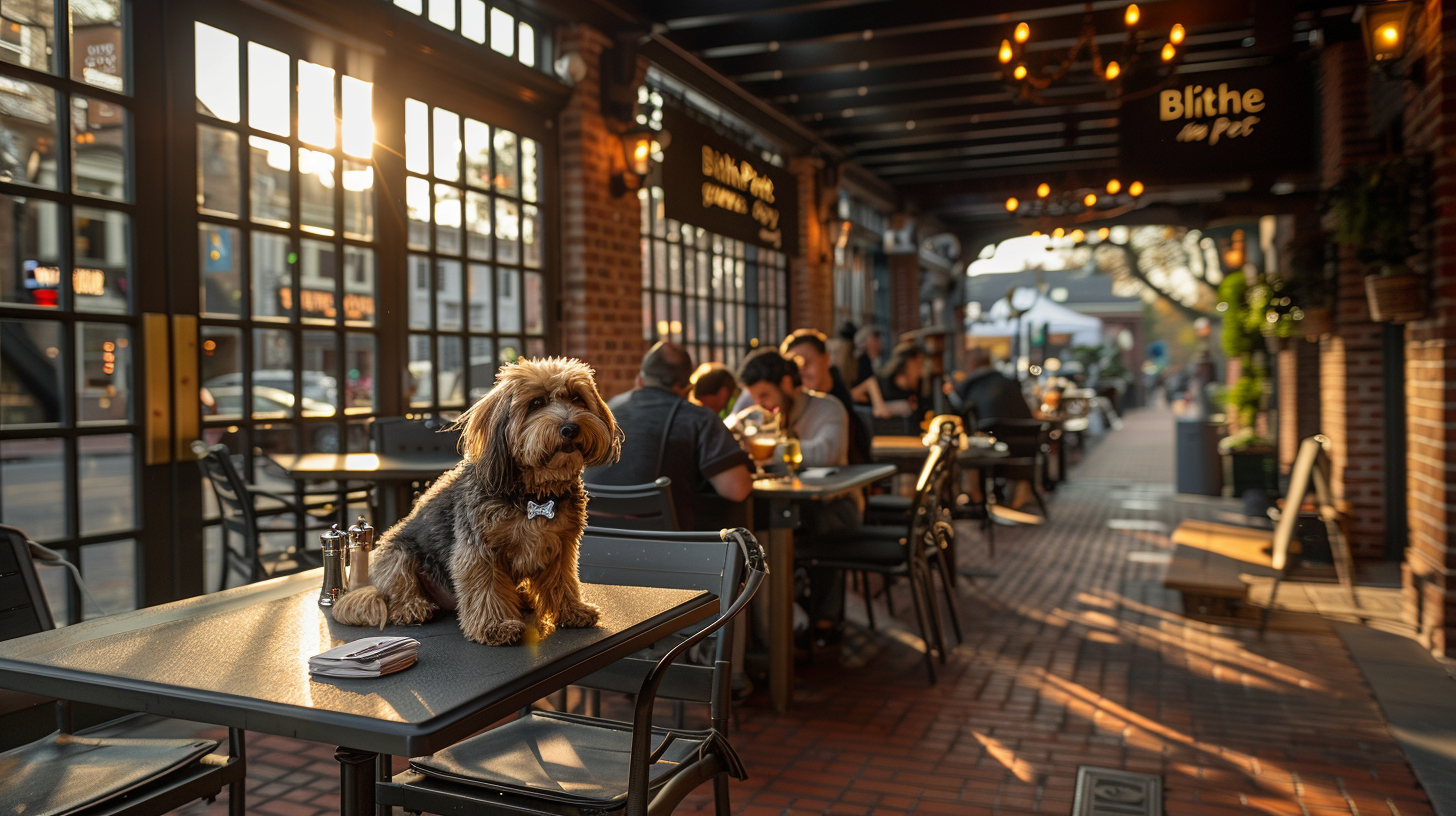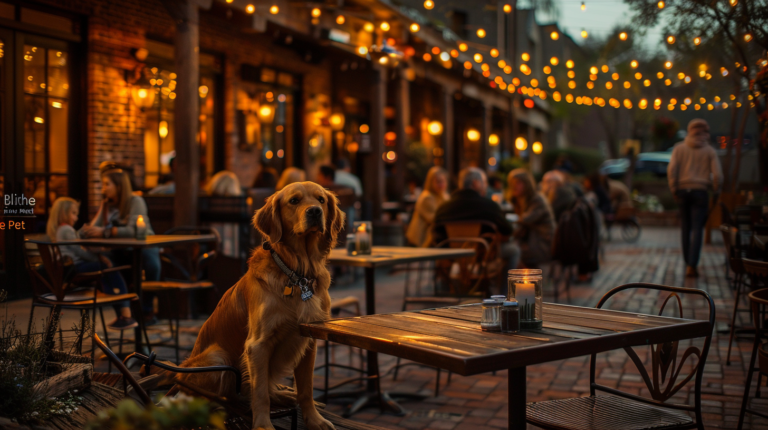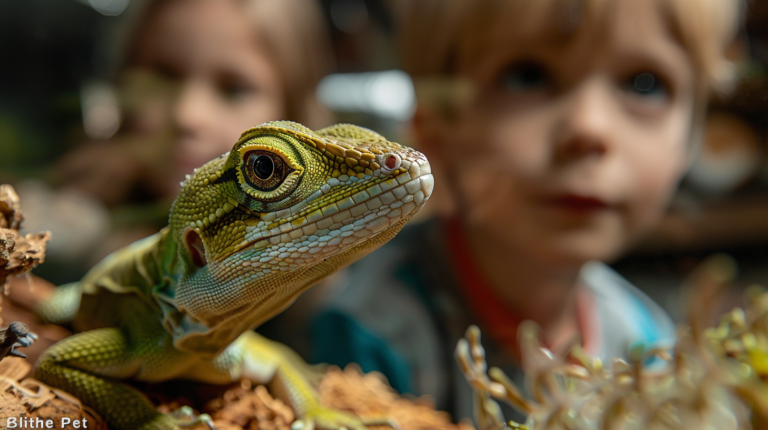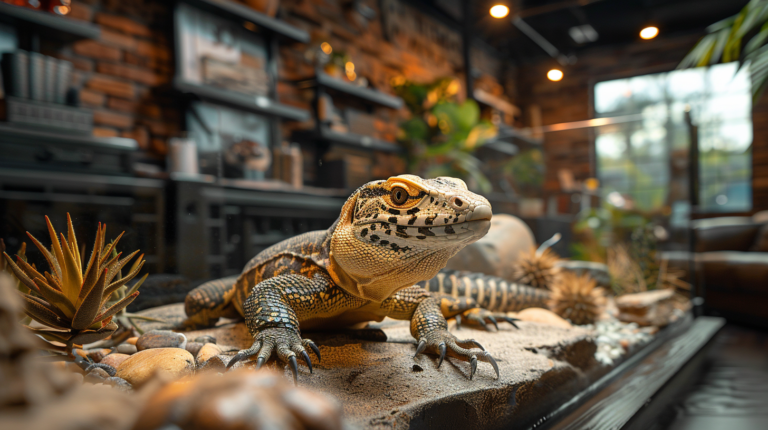Discover the 10 best dog friendly restaurants near you with expert tips, safety guidelines, and everything you need to know for dining out with your furry companion.
Did you know that 68% of U.S. households own pets, with dogs being the most popular companions? As pet ownership continues to rise, so does the demand for dog friendly restaurants where families can enjoy meals together without leaving their four-legged family members behind. Finding the perfect dog friendly restaurants near you doesn’t have to be a challenge when you know what to look for and how to prepare for a successful dining experience.
Whether you’re a seasoned pet parent or new to the world of canine companionship, this comprehensive guide will help you navigate the exciting world of dog-friendly dining. From understanding restaurant policies to ensuring your pet’s safety and comfort, we’ll cover everything you need to know to make dining out with your dog an enjoyable experience for everyone involved.
When I first adopted my rescue dog from a shelter in Colorado, I was amazed by how many local establishments welcomed well-behaved pets. What started as nervous first attempts at outdoor dining has evolved into our favorite weekend activity, discovering new dog friendly restaurants throughout our travels across the United States and Europe.
Understanding Dog Friendly Restaurant Policies
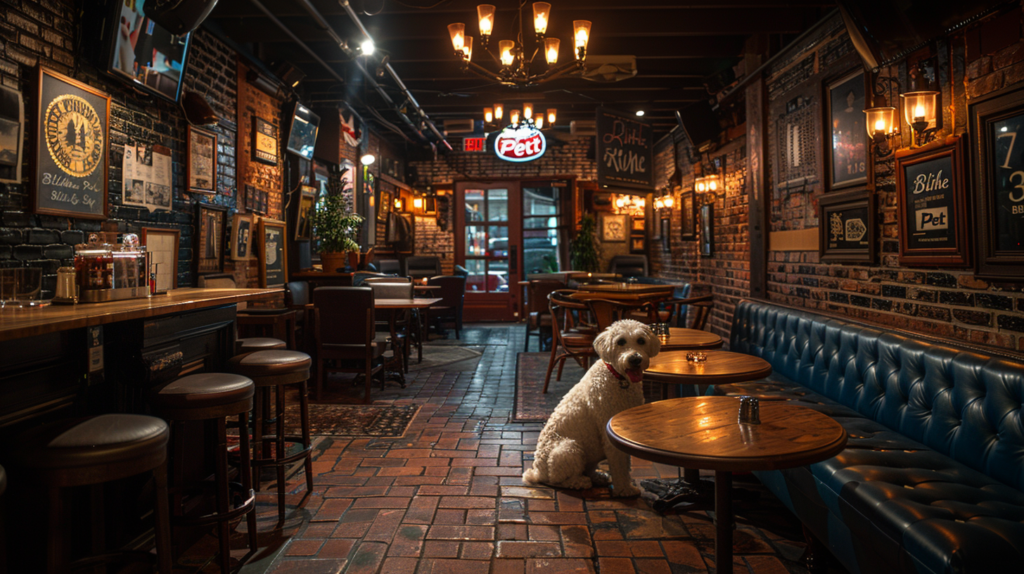
Not all dog friendly restaurants operate under the same guidelines, and understanding these variations is crucial for a successful dining experience. Most establishments that welcome dogs have specific policies regarding where pets can be seated, typically limiting them to outdoor patios, sidewalk seating, or designated pet-friendly sections.
The Americans with Disabilities Act (ADA) makes important distinctions between service animals, emotional support animals, and pets. While service dogs are legally permitted in all areas of restaurants, emotional support animals and pets are subject to individual restaurant policies. Most dog friendly restaurants require pets to remain on leashes, stay on the ground (not on chairs or tables), and be under their owner’s control at all times.
Many restaurants also have breed restrictions or size limitations, though these are becoming less common as establishments recognize that behavior matters more than breed or size. Weather conditions can also affect availability, as many dog friendly restaurants may restrict outdoor seating during extreme temperatures or inclement weather to ensure pet safety.
| Category | Essential Items | Optional Items | Notes |
|---|---|---|---|
| Safety & Control | Sturdy leash, Backup leash, Waste bags | Harness, Long line for large patios | Check local leash laws |
| Comfort & Hydration | Portable water bowl, Travel water bottle | Cooling mat, Pet blanket | Monitor temperature and shade |
| Behavior Management | High-value treats, Training clicker | Puzzle toy, Calming supplements | Use positive reinforcement |
| Health & Hygiene | Vaccination records, Pet wipes | First aid kit, Paw balm | Keep records accessible |
| Documentation | Restaurant contact info, Vet contact info | Pet insurance card, Photo of pet | Prepare for emergencies |
Top 10 Categories of Dog Friendly Restaurants
1. Breweries and Gastropubs
Craft breweries have become increasingly pet-friendly, with many featuring large outdoor spaces perfect for dogs to relax while their owners enjoy locally brewed beers. These establishments often provide water bowls and sometimes even dog treats or specialized “puppuccinos.”
Popular chains like Lazy Dog Restaurant & Bar have built their entire brand around pet-friendly dining, offering dog menus alongside human fare. Local breweries often host “Yappy Hours” or dog-themed events, creating community spaces for pet owners to socialize.
2. Casual Dining Chains
Many national casual dining chains have embraced pet-friendly policies, particularly for outdoor seating areas. Restaurants like Panera Bread, Chipotle, and Shake Shack often welcome well-behaved dogs on their patios and outdoor spaces.
These chains typically have standardized pet policies across locations, making it easier for traveling pet owners to know what to expect. However, individual franchise locations may have variations in their specific rules, so calling ahead is always recommended.
3. Coffee Shops and Cafes
Coffee culture and dog culture often intersect beautifully, with many independent coffee shops and some chain locations welcoming pets in outdoor seating areas. Starbucks locations with patios frequently allow dogs, and many baristas are happy to provide a “puppuccino” (whipped cream in a small cup) for canine customers.
Local coffee shops often have the most relaxed atmospheres for pets, with some even keeping dog treats behind the counter and providing water bowls as standard amenities.
4. Pizza Places
Pizzerias with outdoor seating are often excellent choices for dog friendly dining. The casual atmosphere and typically shorter wait times make them ideal for pets who might get restless during longer meals.
Many pizza chains like Blaze Pizza and local pizzerias welcome dogs on patios, and the shareable nature of pizza makes it easy to keep one hand free for pet management while dining.
5. Waterfront and Beachside Restaurants
Restaurants located near water often have the most generous pet policies, recognizing that many visitors are tourists with their pets or locals who walk their dogs along waterfront areas. These establishments typically feature large outdoor decks or beach-adjacent seating perfect for dogs.
The open-air environment and often breezy conditions make these locations comfortable for pets, while the scenic views enhance the dining experience for humans.
6. Farm-to-Table and Organic Restaurants
Many farm-to-table restaurants embrace a holistic approach to family dining that includes pets. These establishments often feature expansive outdoor spaces, gardens, or patios that accommodate dogs comfortably.
The emphasis on natural, organic ingredients often extends to pet-friendly amenities, with some restaurants offering organic dog treats or locally sourced pet snacks.
7. Food Trucks and Mobile Vendors
Food trucks offer unique advantages for pet owners, as the outdoor nature of the dining experience naturally accommodates dogs. Many food truck gatherings and festivals are pet-friendly events, creating festival-like atmospheres perfect for socializing pets.
The casual, come-and-go nature of food truck dining means shorter wait times and less pressure on pets to remain calm for extended periods.
8. International Cuisine Restaurants
Many international restaurants, particularly those representing cultures with strong outdoor dining traditions, welcome pets on patios and terraces. Mediterranean, Mexican, and Asian restaurants often feature outdoor spaces ideal for dog friendly dining.
These establishments may offer unique cultural experiences for both pets and owners, with some providing traditional pet-friendly snacks from their respective cultures.
9. Sports Bars and Grills
Sports bars with outdoor seating or large patios often welcome pets, recognizing that many customers want to watch games while enjoying fresh air with their dogs. These establishments typically have casual atmospheres that work well for pets.
The longer duration of sporting events means these restaurants are often more tolerant of pets who need time to settle in and get comfortable in new environments.
10. Fine Dining with Pet Policies
While less common, some upscale restaurants have begun offering pet-friendly dining experiences, often with specific pet menus and premium amenities. These establishments may require reservations and have stricter behavioral expectations for pets.
Some luxury hotels and resorts offer pet-friendly fine dining experiences as part of comprehensive pet travel packages, providing high-end options for special occasions.
| Food Category | Safe Options | Dangerous Options | Emergency Action |
|---|---|---|---|
| Proteins | Plain chicken Turkey Fish | Bones Fatty meats Seasoned meats | Call vet if consumed – Monitor for choking or digestive issues |
| Vegetables | Carrots Green beans Sweet potato | Onions Garlic Mushrooms | Induce vomiting only if advised by vet – Contact poison control |
| Fruits | Apple slices Blueberries Banana | Grapes Raisins Cherries | Immediate vet consultation – Can cause kidney failure |
| Dairy | Small amounts plain yogurt | Cheese Ice cream Milk | Monitor for digestive upset – Provide fresh water |
| Grains | Plain rice Oats | Bread with garlic Seasoned items | Remove from reach immediately – Check ingredient list |
| Beverages | Fresh water only | Alcohol Coffee Soda | Contact poison control hotline immediately – Can be fatal |
Essential Preparation Tips for Dining Out with Dogs
Pre-Visit Research and Planning
Before visiting any dog friendly restaurant, conduct thorough research beyond simply confirming they allow pets. Call ahead to verify current pet policies, as these can change seasonally or due to local regulations. Ask specific questions about seating areas, busy times to avoid, and any amenities they provide for pets.
Check online reviews from other pet owners to get insider tips about the best seating areas, how staff treats pets, and any potential challenges. Social media pages often showcase pet-friendly events or special accommodations that might not be mentioned on official websites.
Consider the restaurant’s location and parking situation. Some dog friendly restaurants may have limited parking or require longer walks from parking areas, which could be challenging with anxious or elderly pets.
Training and Behavior Preparation
Your dog’s behavior in public reflects not only on you but on the broader acceptance of pets in restaurants. Basic obedience training is essential before attempting restaurant visits. Your dog should reliably respond to “sit,” “stay,” “down,” and “leave it” commands.
Practice restaurant-like scenarios at home by having your dog lie quietly beside your chair during meals. Gradually increase the duration and add distractions to simulate restaurant environments. Reward calm, quiet behavior consistently.
Socialization is equally important. Dogs should be comfortable around strangers, other dogs, and various sounds and smells they’ll encounter in restaurants. If your dog shows signs of aggression, excessive anxiety, or inability to settle, additional training may be necessary before attempting public dining.
Essential Items to Bring
A well-stocked pet dining kit makes the difference between a successful outing and a stressful experience. Always bring a sturdy leash and consider a backup in case of equipment failure. A portable water bowl is essential, as not all restaurants provide them, and staying hydrated is crucial for pets.
Pack high-value treats for rewarding good behavior and redirecting attention when needed. Bring waste bags for cleanup, even if the restaurant is likely to have them available. A small towel can be useful for wiping paws or drying your pet if weather conditions are less than ideal.
Consider bringing a portable mat or blanket to define your dog’s space and provide a comfortable resting area. This can help your pet settle more quickly and gives them a familiar scent in an unfamiliar environment.
| Region | Best Seasons | Typical Policies | Popular Venue Types | Average Pet Fee |
|---|---|---|---|---|
| 🇺🇸 West Coast |
Year-round
Perfect weather conditions with mild temperatures and minimal rainfall. Extensive outdoor dining infrastructure.
|
Very pet-friendly, Indoor options available | Breweries Cafes Beach restaurants | $0-5 |
| 🇺🇸 Southeast |
Spring/Fall optimal
Hot, humid summers require early morning/evening dining. Perfect spring and fall weather.
|
Outdoor only, Growing acceptance | BBQ joints Music venues Breweries | $0-3 |
| 🇺🇸 Northeast |
May-October
Limited by harsh winters. Summer season offers excellent options, especially in coastal areas.
|
Seasonal restrictions, Patio only | Seafood Historic taverns Coffee shops | $5-10 |
| 🇺🇸 Southwest |
Oct-April optimal
Extreme summer heat limits outdoor dining. Perfect winter weather for pet-friendly activities.
|
Heat restrictions, Shade required | Mexican cuisine Food trucks Patios | $0-5 |
| 🇺🇸 Midwest |
June-September
Short but pleasant summer season. Growing awareness and acceptance of pet-friendly dining.
|
Limited options, Growing trend | Sports bars Family restaurants Breweries | $0-8 |
| 🇪🇺 Europe |
April-October
Excellent outdoor dining culture. Many countries allow indoor pet access. Sidewalk café traditions.
|
Very accepting, Indoor allowed | Cafes Pubs Trattorias | €0-5 |
Safety Guidelines for Pets in Restaurants
Research indicates that the most common safety incidents involving pets in restaurants are related to food consumption, escape attempts, and interactions with other dogs or customers. Understanding and preventing these risks ensures a positive experience for everyone involved.
Food Safety and Dietary Concerns
Many human foods served in restaurants can be dangerous or toxic to dogs. Chocolate, xylitol (artificial sweetener), grapes, onions, and garlic are among the most dangerous substances that dogs might encounter in restaurant settings. Even small amounts of these substances can cause serious health problems.
Restaurant floors often contain food scraps that dogs might try to consume. Train your dog to “leave it” and maintain close supervision to prevent scavenging. Some restaurants use cleaning products or pest control methods that could be harmful if ingested, making floor supervision even more critical.
Be cautious about well-meaning strangers who want to share their food with your pet. Politely decline and explain that your dog has dietary restrictions. Many people are unaware of foods that are toxic to dogs and may offer seemingly harmless items that could cause problems.
Environmental Hazards and Awareness
Restaurant environments present unique hazards that don’t exist in typical walking or park settings. Hot surfaces like grills, fire pits, or heated patios can cause paw injuries. Metal furniture and decorative elements can become extremely hot in direct sunlight.
Check the ground temperature before seating your dog, especially on concrete or metal surfaces during hot weather. If the surface is too hot for your bare hand, it’s too hot for your dog’s paws. Request seating in shaded areas when possible, and consider bringing a cooling mat for hot days.
Be aware of potential escape routes and secure fencing. Some restaurant patios may have gaps in fencing or gates that could allow anxious or excited dogs to escape. Position yourself and your pet away from these potential exit points.
Managing Interactions with Other Pets and People
Not all dogs are social, and restaurant settings can create stress that leads to unexpected behaviors. Always ask permission before allowing your dog to interact with other pets, and be prepared to create distance if either animal shows signs of stress or aggression.
Children are often excited to meet dogs in restaurants, but not all dogs are comfortable with enthusiastic child interactions. Teach your dog to calmly accept attention while giving you clear signals if they’re becoming overwhelmed. Position your pet where you can easily control interactions with approaching people.
Staff members vary in their comfort levels with pets. Some may be afraid of dogs or allergic, while others may be overly familiar. Respect staff boundaries and guide interactions to ensure everyone feels comfortable.
Etiquette and Best Practices
Proper etiquette when dining at dog friendly restaurants extends beyond basic pet behavior to encompass consideration for staff, other diners, and the establishment’s policies. Following these guidelines helps ensure that restaurants continue to welcome pets and that all customers have positive experiences.
Respectful Behavior Toward Staff and Other Diners
Your dog should remain in designated areas and not block walkways or access routes for staff and other customers. Servers carrying hot food or beverages need clear paths, and your pet’s leash should never create tripping hazards.
Keep your dog close to your table and avoid allowing them to approach other diners’ tables, even if they seem welcoming. Not everyone is comfortable around dogs, and some people may have allergies or fears that aren’t immediately apparent.
Tip generously when dining with pets, as servers often provide additional services like bringing water bowls or accommodating special seating requests. Acknowledge extra efforts made by staff to ensure your pet’s comfort.
Cleaning and Maintenance Responsibilities
Always clean up after your pet immediately, including any accidents, spilled water, or scattered treats. Carry extra waste bags and cleaning supplies beyond what the restaurant might provide. Some establishments may charge cleaning fees for excessive messes, and repeated incidents could result in policy changes.
If your dog sheds significantly, consider bringing a blanket or mat to catch loose fur. Long-haired breeds may leave noticeable fur on furniture, which creates additional cleaning work for staff.
Be honest about any accidents or damage that occurs. Most restaurants appreciate honesty and may be more understanding when pet parents take responsibility for their pet’s actions.
Time Management and Consideration
Avoid dining during peak hours when restaurants are busiest and staff are most stressed. Many dog friendly restaurants have specific times when they’re more welcoming to pets, often during slower afternoon hours or early evening times.
Don’t linger excessively, especially if other customers are waiting for seating. While some dogs settle in comfortably for long meals, others become restless after extended periods, which can disturb other diners.
Consider your dog’s specific needs and limitations when planning meal duration. Puppies, elderly dogs, or pets with anxiety may do better with shorter dining experiences while they build tolerance for restaurant environments.
Regional Differences in Dog Friendly Dining
The acceptance and availability of dog friendly restaurants varies significantly across different regions, influenced by local culture, climate, and regulations. Understanding these regional differences can help you set appropriate expectations and find the best options in any area.
United States Regional Variations
West Coast cities like San Diego, Portland, and Seattle lead the nation in pet-friendly dining options, often with year-round outdoor seating and progressive pet policies. California’s mild climate supports extensive patio dining, and many establishments provide premium pet amenities like gourmet dog treats and specialized pet menus.
The Southeast region has seen rapid growth in dog friendly restaurants, particularly in cities like Austin, Nashville, and Charleston. These areas often combine pet-friendly policies with outdoor music venues and festivals, creating vibrant social scenes for pet owners.
Northeast cities face seasonal challenges, with many restaurants limiting pet access during winter months when outdoor seating isn’t available. However, summer months often feature extensive pet-friendly options, particularly in tourist destinations like Cape Cod and the Hamptons.
European Pet Dining Culture
European attitudes toward pets in restaurants are generally more accepting than in the United States, with many countries allowing well-behaved dogs in indoor dining areas. France, Germany, and the Netherlands are particularly pet-friendly, with some restaurants providing standard amenities like water bowls and pet beds.
Sidewalk café culture in cities like Paris and Rome naturally accommodates pets, and it’s common to see dogs calmly resting beside their owners’ tables during extended meals. However, specific policies vary by establishment, and tourist areas may have different standards than local neighborhood restaurants.
The United Kingdom has seen significant growth in pet-friendly pubs and restaurants, with many establishments marketing specifically to pet owners and hosting dog-themed events and social gatherings.
Seasonal Considerations for Dog Friendly Dining
Weather and seasonal changes significantly impact the availability and comfort of dog friendly restaurant experiences. Understanding these factors helps pet owners plan successful outings and ensure their pets’ safety and comfort throughout the year.
Summer Dining Strategies
Hot weather presents the greatest challenges for pet-friendly dining, with risks including overheating, dehydration, and paw injuries from hot surfaces. Many dog friendly restaurants provide shaded areas, but demand for these spots increases during peak summer months.
Early morning or evening dining times offer cooler temperatures and more comfortable conditions for pets. Some restaurants offer special early bird or happy hour pricing during these times, making them economically attractive as well.
Consider your dog’s coat type and heat tolerance when planning summer restaurant visits. Brachycephalic breeds (flat-faced dogs like bulldogs) are particularly susceptible to heat stress and may need shorter outings or additional cooling measures.
Winter and Cold Weather Adaptations
Cold weather reduces outdoor seating availability at many dog friendly restaurants, but some establishments provide heated patios or enclosed outdoor spaces that maintain pet-friendly policies. These options often require reservations and may have limited availability.
Northern climates may see restaurant pet policies change seasonally, with some establishments only allowing pets during warmer months. Research ahead to avoid disappointment, and consider indoor alternatives like pet-friendly breweries or cafes.
Some restaurants offer special winter amenities like blankets for pets or heated outdoor areas. These premium services may come with additional costs but can extend the dining season for dedicated pet owners.
Health and Wellness Considerations
Dining out with pets involves health considerations beyond basic safety, encompassing nutrition, stress management, and long-term wellness impacts. Understanding these factors helps pet owners make informed decisions about restaurant experiences.
Stress Management for Pets
Restaurant environments can be overwhelming for some pets, with unfamiliar sounds, smells, and activity levels. Signs of stress in dogs include excessive panting, drooling, restlessness, or attempts to hide. Recognizing these signs early allows for intervention before stress escalates.
Gradual exposure helps build tolerance for restaurant environments. Start with quieter establishments during off-peak hours, gradually working up to busier venues as your pet becomes more comfortable. Positive associations created through treats and praise help dogs view restaurant outings as enjoyable experiences.
Some pets may never be comfortable in restaurant settings, and that’s perfectly acceptable. Forcing anxious or stressed pets into these situations can worsen behavioral issues and create negative associations with public spaces.
Nutritional Considerations
While most dog friendly restaurants focus on human food, some offer specialized pet menus with nutritionally balanced options. However, restaurant pet food may not align with your dog’s specific dietary needs or restrictions.
Treats provided by restaurants should be given sparingly and with consideration for your pet’s daily caloric intake. Many restaurant pet treats are high in calories and can contribute to weight gain if given regularly.
If your dog has food allergies or sensitivities, communicate these clearly to restaurant staff and consider bringing your own treats to ensure safety. Some restaurants are willing to accommodate special dietary needs with advance notice.
Economic Impact and Industry Trends
The pet-friendly restaurant industry represents a growing economic segment, with establishments recognizing the financial benefits of welcoming pet owners. Understanding these trends helps explain the increasing availability of dog friendly dining options.
Market Growth and Consumer Spending
Pet owners spend approximately $136 billion annually on their pets in the United States, with dining and entertainment representing a growing segment of this spending. Restaurants that welcome pets often see increased customer loyalty and higher average spending per visit.
Studies indicate that pet owners are willing to pay premium prices for pet-friendly experiences, including higher menu prices and additional fees for pet amenities. This willingness to pay supports business investment in pet-friendly infrastructure and services.
The rise of “pet lifestyle” marketing has created opportunities for restaurants to differentiate themselves through unique pet-friendly offerings, from specialized menus to themed events and social media marketing campaigns featuring customer pets.
Industry Adaptations and Innovations
Technology integration has improved the pet-friendly dining experience through apps that locate pet-friendly restaurants, online reservation systems that accommodate pet policies, and social media platforms that showcase pet-friendly establishments.
Some restaurants have invested in specialized infrastructure like dog washing stations, pet relief areas, and climate-controlled pet waiting areas. These investments signal long-term commitment to serving pet owners and often result in competitive advantages.
The COVID-19 pandemic accelerated outdoor dining adoption, indirectly benefiting pet owners as more restaurants developed outdoor spaces where pets are typically welcome. This expansion of outdoor dining infrastructure may have lasting positive impacts on pet-friendly dining availability.
Common Mistakes to Avoid
Even experienced pet owners can make mistakes when dining out with dogs, and these errors can impact the experience for everyone involved. Learning from common mistakes helps ensure successful restaurant visits and maintains positive relationships with pet-friendly establishments.
Preparation and Planning Mistakes
One of the most common mistakes is failing to verify current pet policies before arriving at restaurants. Policies can change due to seasonal factors, staff changes, or regulatory updates, and assumptions based on previous visits or online information may be outdated.
Bringing untrained or undersocialized pets to restaurants creates problems for everyone involved. Dogs that haven’t mastered basic obedience or haven’t been exposed to public environments often struggle with restaurant settings, leading to stress for pets and disruption for other diners.
Failing to bring essential supplies like water bowls, cleanup materials, and appropriate treats can turn minor situations into major problems. Many pet owners assume restaurants will provide these items, but availability varies significantly between establishments.
Behavioral and Social Mistakes
Allowing pets to approach other diners’ tables, even when they seem welcoming, violates basic restaurant etiquette and can create uncomfortable situations. Not everyone wants to interact with pets, and some people may have allergies or fears that aren’t immediately apparent.
Ignoring signs of stress or discomfort in pets often leads to escalating behavioral problems during meals. Dogs that are panting excessively, trying to hide, or showing other stress signals need intervention, not continued exposure to stressful situations.
Over-treating pets during restaurant visits can lead to digestive upset and behavioral problems. Many well-meaning strangers want to give pets treats, and accepting all offers can result in overfeeding and potential health issues.
Etiquette and Courtesy Mistakes
Failing to clean up thoroughly after pets, including accidents, spilled water, or scattered treats, creates additional work for restaurant staff and may influence future pet policies. Taking responsibility for pet-related messes demonstrates respect for the establishment and staff.
Not communicating special needs or concerns to restaurant staff prevents them from providing appropriate assistance. Many servers are happy to accommodate requests for shaded seating, water bowls, or quiet areas when they’re aware of specific needs.
Lingering excessively during busy periods when other customers are waiting for seating shows lack of consideration for the restaurant’s business needs and other patrons’ dining experiences.
Expert Tips from Veterinarians and Pet Professionals
Professional insights from veterinarians, animal behaviorists, and experienced pet industry professionals provide valuable guidance for safe and successful restaurant dining with pets.
Veterinary Health Recommendations
Dr. Sarah Mitchell, a veterinary behaviorist from Denver, emphasizes the importance of ensuring pets are current on vaccinations before engaging in public activities like restaurant dining. “Restaurants expose pets to many other animals and potential pathogens, so protection through proper vaccination is essential.”
Temperature awareness is crucial, particularly during extreme weather conditions. Veterinarians recommend avoiding restaurant outings when temperatures exceed 85°F or drop below 40°F, as pets can experience heat stress or hypothermia more quickly than humans realize.
Hydration monitoring becomes more important in restaurant settings, where pets may be more active or stressed than usual. Signs of dehydration include excessive panting, lethargy, and reduced skin elasticity, and pet owners should be prepared to provide water frequently.
Professional Training Insights
Certified dog trainers recommend starting restaurant socialization early, ideally during the puppy socialization period between 3-6 months of age. However, they stress that even adult dogs can learn to enjoy restaurant experiences with patient, positive training approaches.
Counter-conditioning techniques can help anxious dogs develop positive associations with restaurant environments. This involves pairing restaurant experiences with high-value rewards and keeping initial exposures brief and positive.
Professional trainers suggest practicing “place” commands at home, teaching dogs to settle on a specific mat or blanket for extended periods. This skill translates directly to restaurant settings and helps dogs understand their boundaries in public spaces.
Industry Professional Perspectives
Restaurant managers who successfully accommodate pets emphasize the importance of clear communication about policies and expectations. Establishing boundaries early in the dining experience prevents misunderstandings and ensures positive experiences for all customers.
Successful pet-friendly establishments often train their staff specifically on pet interactions, including how to approach dogs safely, what to do if pets become disruptive, and how to balance the needs of pet owners with those of other customers.
Many industry professionals recommend peak time management, suggesting that pet owners avoid the busiest dining periods when staff attention is divided and stress levels are higher for both humans and animals.
When to Consult a Veterinarian
Certain situations involving restaurant dining with pets warrant professional veterinary consultation, either before attempting restaurant visits or following concerning incidents during dining experiences.
Pre-Visit Veterinary Consultations
Pets with chronic health conditions like heart disease, respiratory issues, or mobility problems should be evaluated by veterinarians before attempting restaurant dining. These conditions can be exacerbated by the stress, temperature changes, and physical demands of public dining.
Behavioral concerns including anxiety, aggression, or excessive reactivity to other animals or people require professional assessment. Veterinary behaviorists can provide specific guidance on whether restaurant dining is appropriate and what modifications might be necessary.
Senior pets and very young puppies have special considerations that may require veterinary input. Age-related health issues and immune system development can impact a pet’s ability to handle restaurant environments safely.
Post-Incident Veterinary Care
Any signs of illness following restaurant visits should prompt veterinary consultation, particularly symptoms like vomiting, diarrhea, lethargy, or changes in appetite. These could indicate food-related illness, stress-induced problems, or exposure to harmful substances.
Injuries sustained during restaurant visits, including cuts from broken glass, burns from hot surfaces, or bite wounds from interactions with other animals, require immediate veterinary attention even if they seem minor initially.
Behavioral changes following restaurant experiences, such as increased anxiety, reluctance to go on walks, or changes in social behavior, may indicate traumatic experiences that need professional intervention.
Emergency Situations
Heat stroke symptoms including excessive panting, drooling, weakness, or collapse require immediate veterinary emergency care. Restaurant environments with limited shade or poor ventilation can contribute to rapid overheating.
Allergic reactions to foods, cleaning products, or other environmental factors can develop quickly and may require emergency treatment. Signs include facial swelling, difficulty breathing, or widespread hives.
Ingestion of toxic substances, whether from food scraps on restaurant floors or intentional feeding by well-meaning strangers, requires immediate veterinary consultation and possible emergency treatment.
Frequently Asked Questions
Everything you need to know about dog-friendly restaurant dining
What should I bring when dining out with my dog?
Essential items include a sturdy leash, water bowl, and waste bags…
Always bring a sturdy leash and backup leash for safety. Pack a portable water bowl, waste bags for cleanup, and high-value treats for rewarding good behavior. Consider bringing a small blanket or mat to define your dog’s space, and don’t forget your vaccination records in case they’re requested by the restaurant staff.
How do I find dog-friendly restaurants in my area?
Use apps like BringFido, call restaurants directly, and check social media…
App-based solutions like BringFido and DogFriendly.com provide comprehensive listings with user reviews. Call restaurants directly to confirm current pet policies, as these can change seasonally. Check restaurant social media pages for pet-friendly events and photos of other diners with dogs. Local pet stores and veterinary clinics often maintain lists of recommended dog-friendly establishments.
What foods should I never let my dog eat at restaurants?
Chocolate, grapes, onions, and garlic are extremely dangerous…
Avoid chocolate, xylitol (artificial sweetener), grapes, raisins, onions, and garlic at all costs – these can be toxic or fatal to dogs. Also prevent consumption of cooked bones, fatty meats, alcohol, coffee, and foods high in salt or spices. Even small amounts of these substances can cause serious health problems requiring immediate veterinary attention.
How can I train my dog for restaurant behavior?
Start with basic obedience, practice at home, and gradually increase exposure…
Always ensure your dog masters basic commands like “sit,” “stay,” “down,” and “leave it” before attempting restaurant visits. Practice restaurant scenarios at home by having your dog lie quietly beside your chair during meals. Start with short visits to quiet establishments during off-peak hours, gradually building tolerance for busier environments and longer durations.
What’s the proper etiquette for dining with dogs?
Keep dogs close to your table, clean up thoroughly, and respect other diners…
Always keep your dog close to your table and prevent them from approaching other diners or blocking walkways. Clean up immediately after any accidents or spills, and never allow your pet on furniture. Tip generously when staff provides extra services like water bowls, and consider avoiding peak dining hours when restaurants are busiest and most stressed.
When should I consult my veterinarian about restaurant dining?
Before first visits for health issues, after concerning incidents…
Always consult your vet before restaurant dining if your dog has chronic health conditions, anxiety issues, or behavioral problems. Seek immediate veterinary care if your dog shows signs of illness after restaurant visits, including vomiting, diarrhea, or lethargy. Senior dogs and puppies may need special assessment to determine if restaurant environments are appropriate for their age and health status.
Conclusion
Finding and enjoying dog friendly restaurants near you opens up a world of social opportunities for both you and your canine companion. From casual breweries with welcoming patios to upscale establishments offering specialized pet menus, the growing trend of pet-friendly dining creates countless opportunities for shared experiences.
Success in restaurant dining with dogs depends on proper preparation, understanding of etiquette, and commitment to ensuring positive experiences for all involved. By following the guidelines outlined in this comprehensive guide, you can confidently explore the exciting world of pet-friendly dining while maintaining the safety and comfort of your beloved companion.
Remember that every positive interaction between well-behaved pets and restaurant staff contributes to the continued growth of pet-friendly dining options. Your responsible pet ownership and consideration for others helps pave the way for future generations of pet owners to enjoy these special bonding experiences.
The investment in training, preparation, and proper equipment pays dividends in the form of memorable meals, social opportunities, and strengthened bonds with your pet. Whether you’re discovering local neighborhood gems or exploring pet-friendly destinations during travel, dining out with your dog can become one of your most cherished shared activities.
For more expert pet care tips and product recommendations, visit BlithePet.com your trusted source for pet wellness.
Have a similar experience with your pet? Share it in the comments below! Don’t forget to check out our other helpful guides at BlithePet.com.

